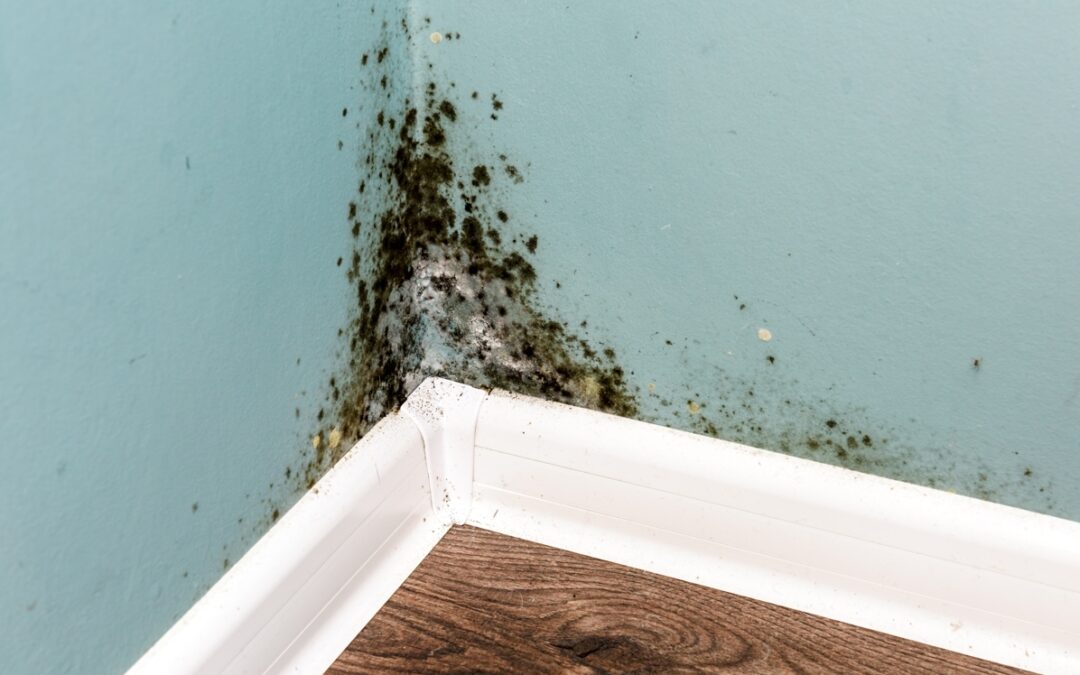Mold can be a homeowner’s worst nightmare. No one wants to peel back a carpet or open a cabinet and find dark, fuzzy splotches covering the area. Unfortunately, mold growth can be found if your home is exposed to excessive amounts of moisture.
Signs that there may be mold growing in your home include:
- Visible dark spots along your walls or carpets
- Musty or strong odors
- Physical sickness (asthma, sneezing, coughing, itchy skin, etc.)
If you find mold in your home, it can get costly trying to remediate the damage. Thankfully, some home insurance policies can cover it under certain circumstances.
When is Mold Covered by Insurance?
Mold growth can be tricky when it comes to insurance coverage. For most providers, their policies will accept a mold claim if it’s considered a “covered peril” – a sudden or accidental situation that’s included in the policy.
For example, many home insurance policies protect against water damage that’s caused by an “act of nature.” If mold is a result of this water exposure and damage, its remediation will be included in the coverage.
The most common mold growth situations that are considered “covered peril” include:
- A burst or broken pipe
- A broken water heater
- An appliance malfunction
- An overflowing toilet
- Water damage caused from putting out a fire
When is Mold NOT Covered?
Unfortunately, there are also many instances where mold growth is NOT considered a covered peril. This is typically when the growth is caused by neglect of the homeowner, and is not an accidental occurrence.
Instances include:
- Flooding (usually excluded from general home insurance)
- Water backup and broken sump pumps
- Neglected leaks and broken seals
- Poor ventilation
What to Do if You Find Mold in Your Home
Once you have stopped the water from seeping or leaking into your home and cleaned up the damage the best you could, it’s important to file a mold claim as soon as you can. That way, your insurance company can see that you took every step possible to prevent mold growth by staying on top of it.
Filing a mold claim is done the same way you file a homeowner’s insurance claim, with some tweaks. Here are steps to follow once you’ve stopped the water leak:
- Document the initial damage using photos or videos, and continue to document the mold growth over time.
- Clean up the excess water and dehumidify the area.
- Make any necessary repairs and remove any damaged items. However, make sure to keep the ruined items and receipts of newly purchased materials for your insurer.
- Report the incident to your insurance company.
In some situations, your mold claim could be considered part of a causal incident claim. If a pipe bursts in your home or an appliance breaks, your insurance company may send a mold remediation team along with the repair efforts to prevent mold growth in the first place.
Whether your home insurance company covers the mold claim or not, remedial efforts can get costly. Make sure to hire professional mold remediation and removal services to completely get it out before too much damage occurs.
Homeowners Insurance in Richmond, VA
Accidents happen all the time. If water damages your home, it can lead to serious mold growth that can tarnish your structural property. Thankfully, if you have good homeowners insurance, a mold claim could be covered.
When you need quality home insurance for your Richmond residence, Sanford Insurance has several policies for you to choose from. We cover direct physical loss, home reparations and many more incidents.
Call us today and ask about our home insurance plans that can cover certain mold damage.
